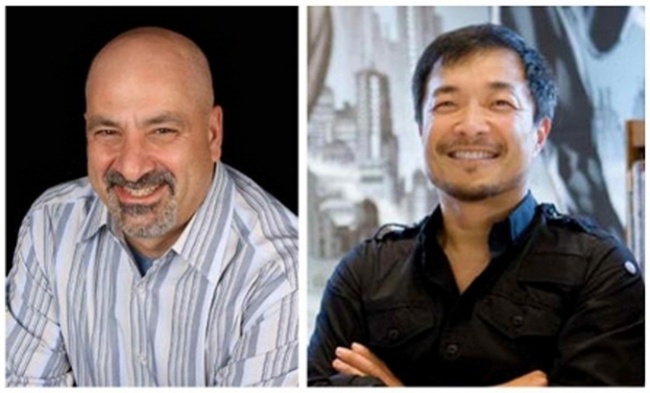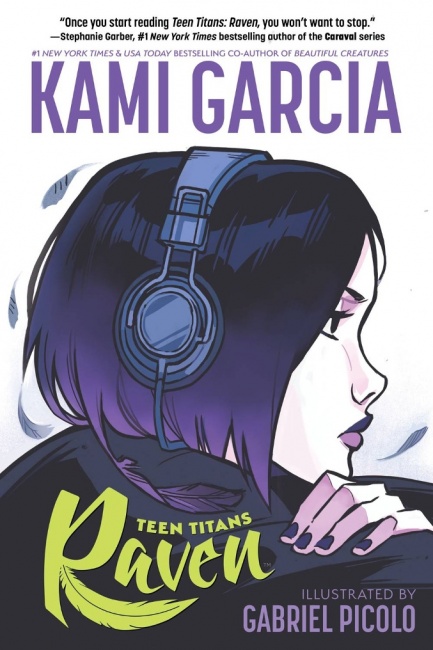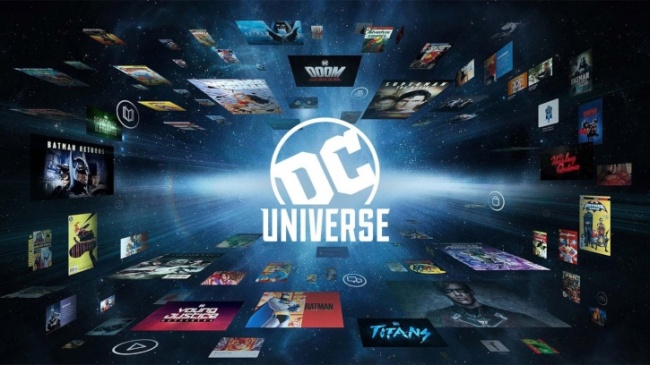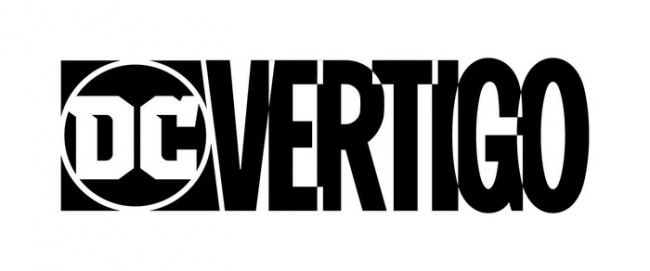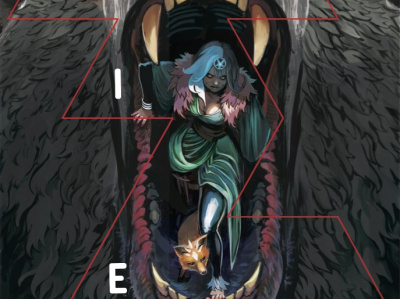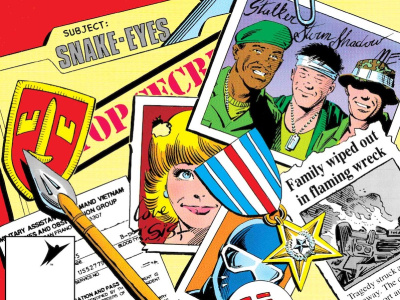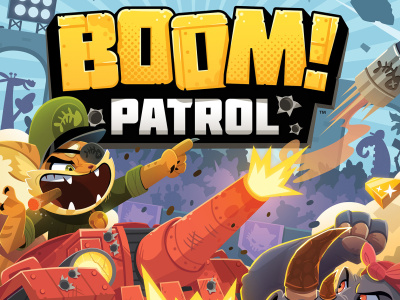We sat down with DC Publisher Dan DiDio and DC Publisher and Chief Creative Officer Jim Lee at San Diego Comic-Con to catch up on the rapid changes in the industry and at DC. In Part 1, we hear their diverging opinions on current market conditions, including digital, and discuss the future of DC Universe and the new DC brand strategy. In Part 2, we discussed the Mad Magazine decision, content trends, planned mass market expansion, and their top 2019 picks.
We’d like to start this off with your take on the current market conditions. We last talked in October (see "ICv2 Interview: DC Co-Publishers at NYCC 2018"), so it's been a little over a half‑year. Any changes that you're seeing?
Jim Lee: I'm a glass half-full kind of person, so I think it looks pretty good.
Dan DiDio: (laughs) We're the complete opposite there.
Lee: We're actually doing really well in periodicals this year. We're above budget in that. We've recently launched our Middle Reader/YA line, and we've got a breakout book already in Raven have gone back to a second printing. The fans have really flocked to that book in particular, so we're buoyed by that initial success. To do that line, we had to shift internal resources, but I think it was the best bet to do given the growth in that category in the book market. I think we're positioned pretty well for the year.
Didio: (laughs) I'd like to challenge that opinion, sir!
Point/counterpoint.
DiDio: I agree with Jim on a lot of good things. The periodical numbers have been strong for us. Our idea to bring down the number of books, I think, is working for us. It allows us to spend more time to improve the creativity of the material, which is what we feel is important right now. The Young Adult line starting to really catch fire with the Raven book has been exciting for us. I think we've been more than pleased than what we've seen on the Black Label material so far. All those things considered, it's been going good.
Graphic novels has been a weak spot for us that we have to address, because that has been such a mainstay of our publishing schedule and publishing plan. If that's changing in any way, shape, or form, whether it's because of lack of interest or because digital is cutting into that business, we're not really sure. We have to explore that a little bit further.
Where my concern comes from is more about the overreliance on nostalgia, speculator marketing, variant covers, and a lot of things that seem to be driving numbers in sales to give the appearance of a healthy industry, but it's not built on the ongoing success of the individual titles in order to keep those numbers successful and maintained. If we're creating these artificial highs on a continual basis, if something pulls that apart, does it break the infrastructure overall, and how do we change these buying patterns in that fashion to build something that is a more healthy business going forward?
Lee: I'll add one other thing. On the digital side, I think it's been pretty flat in recent years, which is a little disheartening.
Well, download‑to‑own has been pretty flat, but the subscription side's been growing, right?
Lee: Right. A lot is moving to subscription, and that is having a downward pressure on transactional sales. But I think it's discouraging in general because everyone talks about digital being the future. If there's anything that should continue to grow year-in, year-out, it should be that channel. The fact that it's kind of plateaued and we've hit a wall speaks to a lot of different things. We need to reinvent what we're doing digitally. The subscription service that we're doing on the DC Universe platform is part of that. We just have to get better at marketing to people that know our characters, love our characters, but aren't buying comics.
You mentioned DC Universe. WarnerMedia just announced HBO Max, its uber-streaming service. With that rolling up a lot of the WarnerMedia content, how does DC Universe survive on its own?
Lee: I think there's always going to be room for a tool that allows us to engage directly with fans. That is the future, if I could borrow that line from digital. We have nothing really like it, so creating something that is the place where all DC fans can come together, buy, read, enjoy, connect, and communicate with or share community with one another is vital and important. We're still going to have original content going through, but that slate is still being worked on. There'll be announcements going forward.
We’re talking about new video content, specifically, right?
Lee: Original content, and obviously a lot of people go on to watch the older material as well, the archived material, the library material. That's a big part of it. Then obviously the comics. There are a lot of readers that are just reading the comics as well, so it's a great value proposition. We love being able to communicate directly with the fans, and so we've been building up the real‑life experiences and rewards that you get out of being a member. It's not just being able to watch what you want when you want, but actually coming to conventions like this and being able to go to activations, get behind‑the‑scenes tours, special products, meet‑and‑greets, all that kind of stuff.
Are you going to window the content through DC Universe to HBO Max?
Lee: It’s too early to say.
We’d like to talk a little bit about the brand changes (see "DC To Abandon Vertigo, Zoom, and Ink Brands"). There was one thing we weren't clear on from the original announcement. You've got these age brackets with Black Label, DC Universe, DC Kids, etc. Does that mean that everything that's published under the DC Universe brand is going to always be appropriate for those age ranges, up to 16 and down to 13, with the kids titles younger than that? Is that the way it goes?
Lee: To explain it, we've been trying to be very careful with the words, brands, labels, all that kind of stuff.
Right. There are no imprints, we noticed.
Lee: Right. There's one brand, that's the DC brand, but we're producing content that's appropriate for different what we call "ages and stages," different demographics or different age groups of readership. We're labeling those DC Kids, DC, and DC Black Label. That's the only qualifier. We're also doing call-outs with the colors. The DC Kids is a slightly lighter shade of blue, the core line is DC blue, and then the 17‑plus material is a black DC.
It seemed that with the elimination of the imprints, the elimination of Vertigo as a separate brand, that there's a general trend toward emphasizing DC over all sub‑brands. Can you talk a little bit about that strategy overall?
DiDio: The strategy's very simple. The marketplace is very crowded and very noisy, to be very honest, and to fractionalize sales and separate ourselves, we lose the strength of our characters and our name recognition. We can spend a lot of time and energy creating new brands and identities, or we can spend all of our energy strengthening one overall marketing idea, which is DC, which is the most recognizable one of all. And from there, we'd be able to feed out into all these areas. I think we have a much stronger message if we go out and say that DC Comics or DC provides product and stories for everyone of all types, all cuts, and all slices.
Jim mentioned "ages and stages." We have things for young readers, older readers. We have every type of interpretation of our characters. We have a shared universe in the center of that. There's so much you could see and do with the DC characters and worlds that all you have to do is see that DC logo and then find the book that fits you. I think that's the best way to do it. That way, we're going to spend all our time making sure that DC stands for so much in regards to storytelling and diversity, and that our characters come to life in so many different ways. If you don't know or don't expect it just to be a superhero title and want more, we have it all there to offer you.
Click here for Part 2.
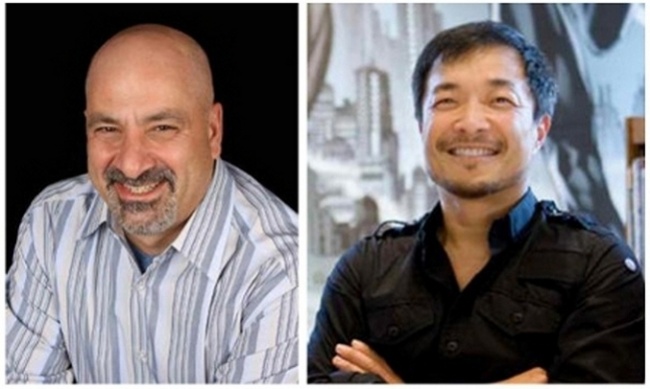
Point/Counterpoint on Market Conditions, the Future of DC Universe, DC's New Brand Strategy
Posted by Milton Griepp on August 7, 2019 @ 10:58 am CT
MORE COMICS
New 'Die' Story Out in November, Alongside 'Die Quickstart RPG Guide'
August 11, 2025
The Die: Loaded #1 will be released in November 2025, the same month as The Die RPG Quickstart Game Guide.
'Hama Files Editions' Will Include a Letter from the Creator
August 11, 2025
Each issue of the Hama Files Editions will include a letter from Hama with background information about the comic.
MORE NEWS
New Tank Battle Board Game by Smirk & Dagger
August 11, 2025
Smirk & Dagger will release Boom Patrol, a new tank battle board game, into retail.
New Weird Swashbuckling RPG
August 11, 2025
Magpie Games will release Rapscallion, a new weird swashbuckling RPG, into retail.



